

Palazzo Giacobetti Vallemani has its own page in this site.
Palazzo Bartocci Fontana (16th century)
This palace, which incorporates a number of medieval buildings, is attributed to Giulio Danti. It previously belonged to the Filipucci and then the Bindangoli family. Its left wing now houses Hotel il Palazzo.
Palazzo Bernabei (1646)
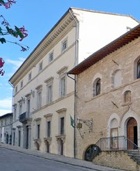
Palazzo Bonacquisti (16th century)

In 1572, Giulio Cesare Galeotti (a local historian) recorded that “messer Galeazzo Filippucci” (presumably Galeazzo Filippo Pomponio Bonacquisti) found part of a Roman statue (presumably during the construction of the palace) and placed it in his house. A large fragment from a marble statue of a seated goddess was still in the inner courtyard of Palazzo Bonacquisti in the late 20th century, when it was placed in the Museo Civico. The statue is usually thought to have represented Minerva and to have come from the Roman temple.
The Fondazione Cassa di Risparmio acquired the palace in 2007, and it is to be adapted to provide exhibition space. Maurizio Zubboli still runs the bookshop of the Touring Club Italiano on the ground floor, which his family established here in 1870.
Palazzo del Cardinale (1449)
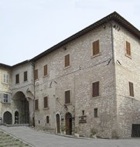
Palazzo Fiumi-Roncalli (17th century)
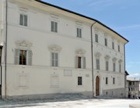

Palazzetto Vannola (17th century)
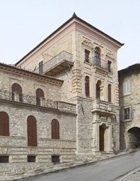
Villa Gualdi (ca. 1873)
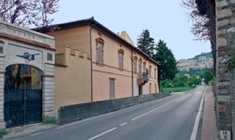
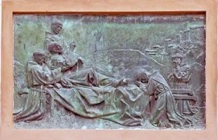
This recently-restored villa stands on the site of a medieval church and hospice, San Salvatore delle Pareti. It was from this point that St Francis blessed Assisi in 1226 as his followers took him to Santa Maria degli Angeli to die. A relief on its facade depicts this event.
Return to Monuments of Assisi.
Return to Walk I (Palazzo Bonacquisti).
Return to Walk II (Palazzo del Cardinale; Palazzo Fiumi-Roncalli; and
Palazzetto Vannola).
Return to Walk III ( Palazzo Bartocci Fontana and Palazzo Bernabei).
Return to Around Assisi ( Villa Gualdi).
Return to the home page on Assisi.

